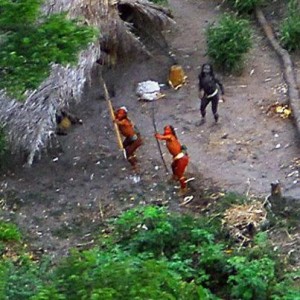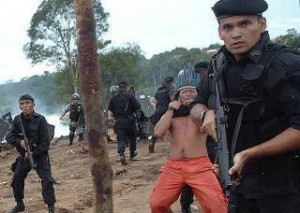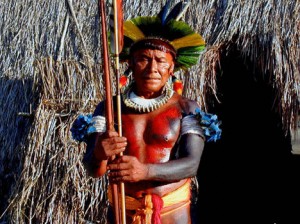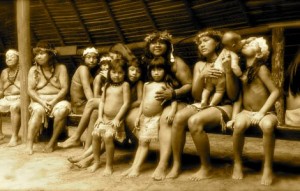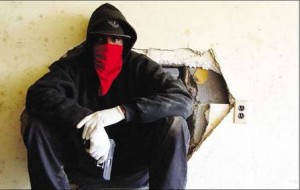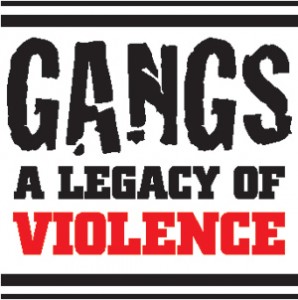My Journey With Amazon Moon
After a long year I recently completed the first draft of Amazon Moon. The first full edit went fairly smooth, or at least as painless as I could make it. Now I’m patiently awaiting replies from a few beta  readers and then will go through the novel once more to finalize it.
readers and then will go through the novel once more to finalize it.
The writing of Amazon Moon has truly been an interesting, personal journey for me as an author. I set out upon the path of wanting to write a good, action-adventure story with a bit of sci-fi set in the deep, mysterious Amazonia region—and ended with a discovery of evils that I did not know so fully existed.
The goal of every author is to be a good storyteller, yet as writers, we hold a responsibility to educate our readers as well about certain facts as we move them through chapters until the end. Such responsibility was better understood by me once my protagonist, John Alvarez, entered the rain forest.
A psychologist might have a field day analyzing John; the boy who longed for love, became lost within himself when his family was lost to him, yet as a man, eventually found a home within the Marine Corps to anchor his soul to. He learned warfare well, possibly too well. That could be debated, and then came the insanity thrust upon him by having to doubt the truths of all he has learned to date once in the rain forest. But as I wrote this novel, John Alvarez took a slightly different path in his life than I originally intended. The variation began when he met the indigenous people of the Amazon and discovered their plights.
Simply saying, “the Amazon,” invokes images of thick jungle, wild animals, hidden tribes, and the immediate setting of danger at every turn. It’s one of the last bastions of immense territory in the world yet to be fully explored. Yet, with all its hazards and menace, we owe so much to this region.
The bio-diversity of the Amazonia rain forest is vital to our eco-system and pharmaceuticals. Climate change is heavily dependent upon it and we need the forest to keep it in balance. Over two-thirds of all mass produced drugs are derived from medicinal plants. In the Amazon, 650 species of plants with pharmaceutical value have been discovered. Gold, oil, and other resources are within this region as well. The value of the rain forest is immense, and it is home to many indigenous Indian tribes. 
The history overall of the Amazon is fascinating and truly worthy of reading. But it is saddening as well, often to the point of being comparable to what our Native American Indians endured as the government and gold seekers chose to steal their rich lands.
There may be predatory creatures in the Amazon—black caiman, jaguar, cougar, piranha, viperous bushmaster snakes and monstrous anacondas—but none so vile and vicious as the “civilized” men and governments who decided they wanted to drive the tribes out in order to fill their pockets from the sale of the region’s rich resources.
Every country the Amazonia region touches is guilty in one form or another of injustices against the indigenous tribes. That in itself should be an embarrassment to mankind, yet little has been done by governments to protect these native people or the Amazon. What has been done is nothing more than creating a façade to display to the world.
 Imagine if your family lived in a rain forest village under primitive conditions. In addition to the daily struggles to provide food for your family, you must be concerned with brutal Maoist guerilla factions such as the Shining Path traveling through your land; drug cartels and trafficking, their soldiers killing anyone they find in order to protect their drugs; land grabbers and ‘loggers’ raping and savagely killing your loved ones then burning your village to the ground because they want the trees for lumber—or the gold seekers who murder villagers in order to stake a claim and destroy the land as they mine for gold. But worse, is when governments such as the Peruvian government use their military to bomb your village and then send in militia to drive you out.
Imagine if your family lived in a rain forest village under primitive conditions. In addition to the daily struggles to provide food for your family, you must be concerned with brutal Maoist guerilla factions such as the Shining Path traveling through your land; drug cartels and trafficking, their soldiers killing anyone they find in order to protect their drugs; land grabbers and ‘loggers’ raping and savagely killing your loved ones then burning your village to the ground because they want the trees for lumber—or the gold seekers who murder villagers in order to stake a claim and destroy the land as they mine for gold. But worse, is when governments such as the Peruvian government use their military to bomb your village and then send in militia to drive you out.
The indigenous tribes of Amazonia once numbered in the thousands, now due to civilized society’s gifts of rape, torture, murder, infectious diseases, venereal diseases, and violent land grabbing, some tribes are near extinction and fragmented while others only number in the hundreds.
Does this all sound painfully similar to our own embarrassing United States history in the dealings with Native American Indians? Unfortunately, it is almost verbatim.
In one disgusting account, I read that loggers used a different approach to rid themselves of a tribe. They donated clothes to the tribe. It sounds quite peaceful and generous until it was discovered that the clothes had all been worn by people sick with small pox and other infectious diseases—then was intentionally given to the Indians. The outcome was as expected by the loggers. The majority of the tribe died.
I read one news report of loggers burning an eight years old village child to death. They caught the girl, tied her to a tree then set fire to her while she was alive. It was part of their tactic to force the tribe off their land so the timber could be taken. The government was still investigating and said they believed it never happened although they did not discuss the tribes that have been almost massacred by loggers.
It would take a novel to fully tell of the injustices alone performed and being performed today on the Amazonia tribes. My hope with this article is to inform readers there are far more stories to be known than what I have now written. 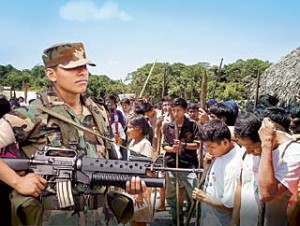
I encourage you to seek out the information and read it for yourself. Use the Internet and search for “indigenous tribes of the Amazon” then begin reading about the atrocities committed against them. Perform a search on “rainforest loggers” and “Amazon gold miners” and see for yourself the volumes of real-life horror stories that will appear.
When Amazon Moon is published in the future, I hope you will enjoy its action filled, adventurous story, as well as my other presently published novels. But I hope most of all you will continue reading about the Amazon itself.
One day mankind may learn to not repeat the mistakes we have made throughout history. For now, I doubt so.
Sincerely,

